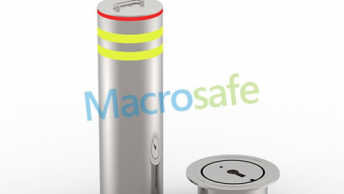Antihacker Security If you want to learn about how to protect your Android smartphone from Antihacker Security, you have come to the right place. Here, you will find a brief guide that will teach you how to keep your phone safe from the latest and greatest malware. You will also find some tips for locating and uninstalling the app if you lose your device and a few simple ways to deal with pop-ups and advertising.
Pop-ups
If you receive a fake pop-up warning in your Ant hacker Security App, it may be an attempt to phish for private information. It’s important to know what to look for, so you can avoid falling for these scams.
A pop-up is a window that appears when you browse the internet. They are usually ad support and can lead to downloadable content, which can have more consequences than you bargained for. Pop-ups are especially invasive on mobile devices, where they can hijack the entire screen.
There are a number of ad-supported websites that can be a gateway to malicious software and data leakage. Most people don’t visit these pages intentionally. Instead, they are advertise through PUAs or dubious websites.
Many of these sites will send you photos taken by your front camera and a message stating that your internet connection has been hacek. The site might even redirect you to unwanted webpages. In some cases, these rogue web pages will automatically download harmful software onto your machine.
Some fake security alerts are design to scare you into giving up personal and financial information. You are then urge to take action, which can lead to even greater consequences for your privacy.
Another type of pop-up is known as shareware. This is typically a barrage of banners and notifications designed to make you panic. Shareware can also corrupt your computer and leave you susceptible to credit card fraud.
If you receive a suspicious pop-up warning, you should immediately close the browser window. After that, it’s a good idea to update your browser and antivirus software.
These types of scams can be difficult to detect. However, you can use the contact details of the anti-virus vendor to report the warning. Also, be careful when using email attachments. Never open an email unless you can verify its authenticity.
There are some free tools that you can install on your PC to help protect it from these kinds of malware. These include Malware bytes and HitmanPro. Using a good firewall can also help protect you from these threats. Additionally, be sure to avoid downloading software from unknown companies.
Advertising
Advertising is a relatively new form of cyber-attack. It involves distributing malware through online ads. These attacks can be direct at individuals or businesses. They are generally target at Windows users, but they are becoming more prevalent on mobile devices.
Advertising can occur on any type of website. This includes websites you might think are reputable. For example, you might see an advertisement for a company like Spottily. The ad might also be on a site with a high online profile.
You might also see adware or spyware, which is a more complex form of advertising. Adware installs on your device without your knowledge and monitors your browsing activities. In addition to tracking your keystrokes, it may install malicious software.
If you notice that you’ve been receiving a lot of pop-up ads on your PC, there’s a good chance that your computer is infect. Luckily, there are ways to get your computer clean.
Some of the easiest ways to protect your online activity are to keep your operating system and web browsers Antihacker Security updated and to tighten up any vulnerability you might have. Also, be wary of suspicious attachments and fake login pages.
One of the most popular forms of advertising is a drive-by download. An ad that appears to be from your favorite website can infect your device without you even clicking it. Another advertising tactic involves an exploit kit. This can be use to discover hidden vulnerabilities in your browser and install malware.
Lastly, there are malicious pre-roll banners that can infect your device without you clicking them. These banners use flash files to load up your screen.
Fortunately, there are steps you can take to safeguard your devices against these malicious campaigns. In particular, be sure to keep your operating system and web browsers up to date and to avoid downloading and installing too many programs. Taking these simple precautions can help minimize the risk of identity theft and fraud. Antihacker Security Advertising and adware can both be difficult to spot. The best way to do so is to be vigilant.
Locating your phone if you misplace it
You can’t always be sure your smartphone will come back, but you can make locating it a bit easier. There are a few free apps available to help you. However, the best solution is probably to take precautions in the first place. Using a service offere by your carrier will likely prevent you from having to worry about tracking down your smartphone if it’s lost.
In addition to your phone carrier’s help, there are a number of other solutions out there to help you out. A GPS Tracker app is a popular choice, and the company has over two million downloads. It can track your device’s location and retrieve thief’s text messages.
Add Some : Blogsstyle







